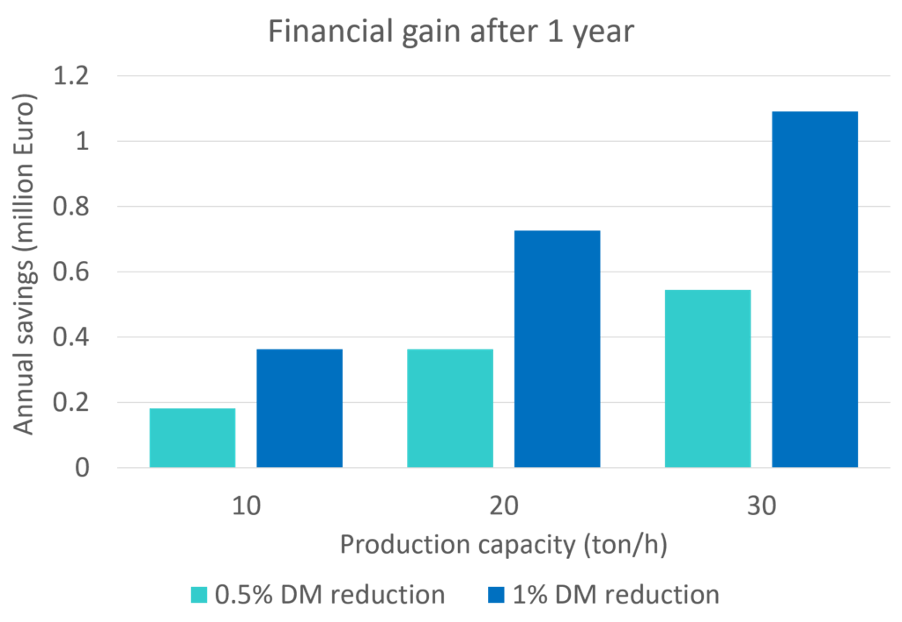Dry matter is a key quality parameter for French fries or other potato-based products. Manufacturing companies must comply with legal requirements as well the dry matter requested by the customers. Obtaining control over this parameter generates considerable profits since potatoes are the biggest cost of the French fries production. A rough estimation shows that a 1% reduction in dry matter during production leads to more than 1% increase in profit. Aquantis offers an unique inline moisture – dry matter solution for French fries and related products to make this financial gain a reality.

Figure 1: Moisture-Sense – inline moisture sensor for French fries.
Let’s have a closer look to the financial benefit by using this inline moisture – dry matter sensor. When targeting a dry matter of 30%, an additional safety margin of 1% is foreseen. In this case, the process operator aims for a dry matter content of 31%. For a 30-ton line, a reduction of 1% in dry matter translates to a 1.9 ton/h reduction of raw material for the same amount of end product. With a price of €80/ton (data taken from Belgapom), a moisture-dry matter sensor on a single 30-ton line can save €152 per hour. Assuming that the production runs 24/7 for 300 days in a year, this 1% dry matter change results in a financial gain of €1.09 million per year.
Every second, 500 inline, go-through measurements are acquired. With a 99+% accuracy, this consistent data stream is processed and analyzed with AI-based algorithms to give indications to optimize the drying process. All this 24/7 if necessary.

Figure 2: Annual savings in million Euro for a 10-, 20- and 30-ton/h production line.
Figure 2 shows how much can be saved on raw material on an annual base. These savings are proportional to the production capacity. Even if a reduction in dry matter content of only 0.5% can be achieved, over €500 000 per year can be saved. It is important to note that savings due to a better control of the moisture content (e.g. reduced energy cost, waste, etc.) are not included.
However, the benefit of the inline moisture – dry matter sensor is more than just a reduction in raw material. Being able to produce on the targeted specifications, water evaporation and energy consumption are significantly reduced. A 1% reduction in dry matter for a 30-ton line lowers the potatoes needs with 13 000 ton per year. This has a positive environmental impact since 450 trucks less are needed to deliver the raw product, lowering traffic, pollution, and CO2 emissions. The benefit further ripples through the value chain requiring fewer farming grounds, pesticides, irrigation, labor, etc.
Conclusion
Inline moisture – dry matter sensing offers a great financial gain. The inline sensing solution allows to tightly control the production process saving dramatically leading to an annual savings up to €1.09 million in raw material for a 30-ton production line. The benefits further extend to lower transportation costs, water and energy consumption contributing to a positive environmental impact.